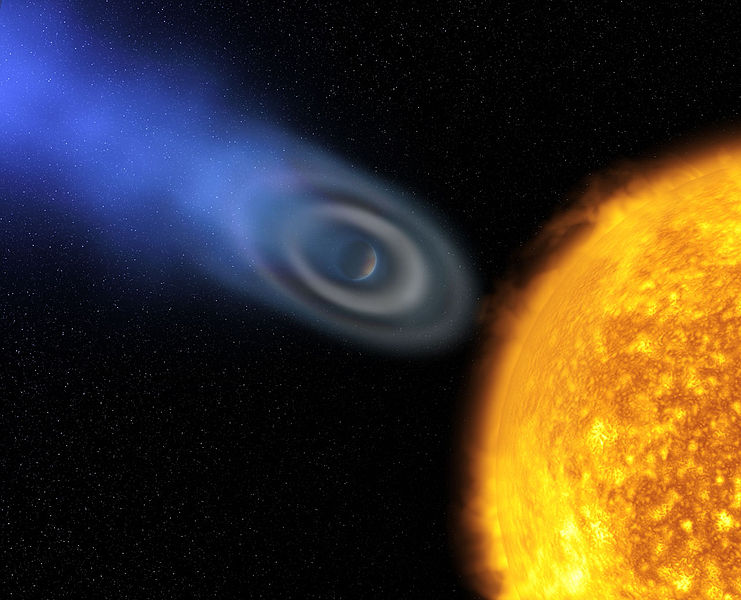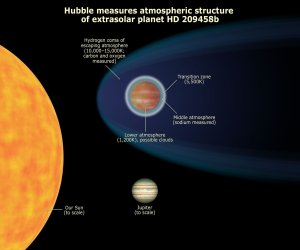

In 2001, the Hubble Space Telescope was directed towards a star in Pegasus, and a wobble was discovered. This observation led to the discovery of HD209458 B—Osiris, the planet that is fittingly named after the Egyptian god of the dead (because that’s what you’d be if you ever visited).
Osiris is a “hot Jupiter”, which means that it is big and extremely close to its star.
A mere 4 million miles (6.4 million km) from the blazing solar surface, Osiris has an orbital period of just 3.5 Earth days. For reference, Mercury orbits the sun at an average distance of 58 million km [35 million miles] and has an orbital period of 88 Earth days.
With temperatures towards the core of the planet exceeding 3,600°F (2,000°C), Osiris makes a swim in the center of an active volcano seem like a treat. Even worse, the enormous envelope of hydrogen, carbon, and oxygen that surrounds this planet reaches 17,500°F (almost 10,000°C). That’s almost 5,000 degrees hotter than many regions on our own Sun, which means that you’d fry long before you even got close to the planet.
Unfortunately, this amazingworld is dying.

Although it is over 200 times more massive than the Earth, and larger than the planet Jupiter, this beast is literally being blown away. Since Osiris is so close to the solar surface, more than 500,000 metric tons (1.1 billion pounds) of air is ripped away from the planet every second.
The gas flies from Osiris at speeds exceeding 21,000 mph (34,000 km/hr). For comparison, in a Category 5 hurricane (a storm which almost no human structures are capable of withstanding) sustained wind speeds reach between 157 mph (253 km/hr) and 190 mph (306 km/hr).
So saying that you’d be swept away is an understatement of epic proportions.
But there is an upside to Osiris’ death.
Because the planet has such a bloated atmosphere, scientists were able to measure its composition. This marked the first time that we have been able to determine the atmospheric composition of an extrasolar planet. Interestingly, this planet has many of the basic building blocks for life: sodium, hydrogen, carbon, and oxygen.
Of course, Osiris is far too hot for life as we know it… but what about life as we don’t know it? Well, anything is possible.
FQTQ is managed by two people, Jaime and Jolene. We want to make science fun and engaging. We’re doing that. With your help, we can do even more.
Below you can support us, get to know us, and access extra content:
Stop by and say hello Or make a onetime contribution
This article is part of a three-part series. See Part II here and Part III here.